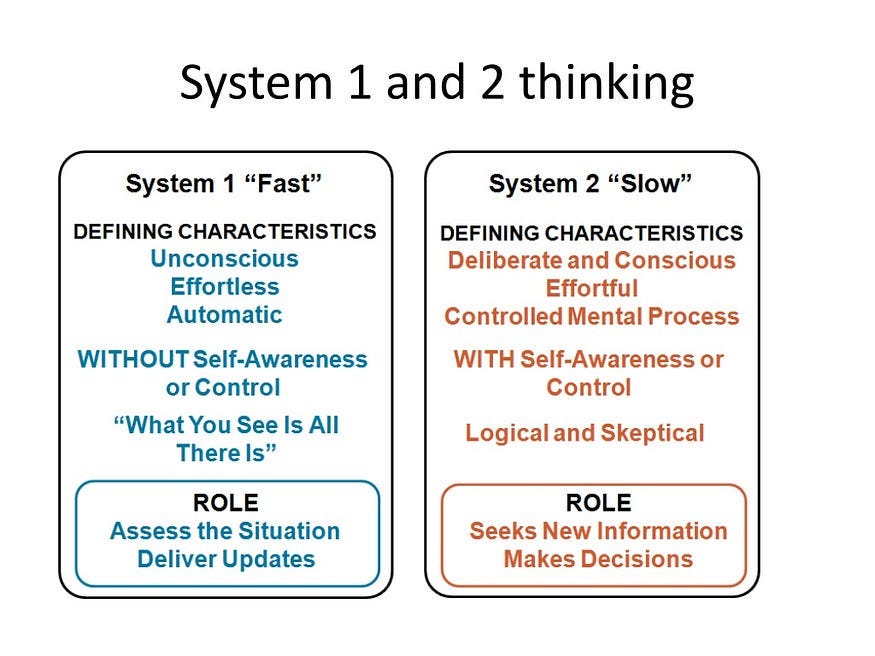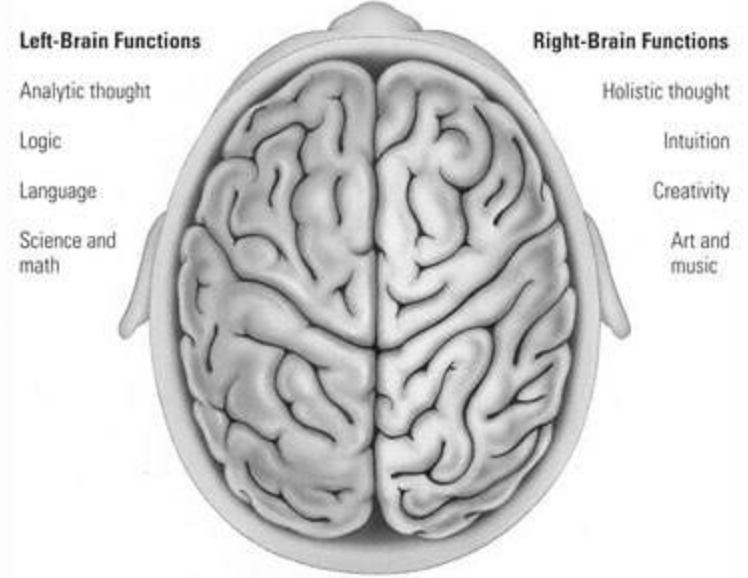5 Ways To Be A Better Puzzle Solver — From Crossword Puzzles To Life Itself
Without a doubt, puzzles will flip the way you think about life.
In 2020, A.J. Jacobs made a fascinating choice to embrace his love for puzzles and embark on an immersive journey into the puzzle world.
Throughout this journey, Jacobs met with some of the world’s greatest puzzle solvers, creators, and collectors, all with the singular purpose of uncovering their closely guarded secrets on how to become a better puzzle solver.
And if there’s one thing Jacobs learned from doing all this, it’s this: Puzzles have the power to completely transform us into better people.
By engaging in puzzles, we can improve our cognitive abilities, unleash our creativity, foster collaboration, and nurture unwavering persistence.
Yet, Jacobs’ vision extends far beyond the realm of merely maintaining mental sharpness and warding off dementia.
Instead, he believes that puzzles have the potential to reshape our entire perspective on the world.
In fact, puzzles have the capacity to instill what Jacobs refers to as “The Puzzler Mindset” — an insatiable curiosity about everything, from politics to human relationships, and a desire to find solutions.
These insights are what sparked A.J. Jacobs to write the book The Puzzler.
So if you want to become a better thinker and discover a new way of approaching life’s difficult puzzles, then here’s how:
1) Don’t Get Furious — Get Curious!
Imagine this: You’re sitting at your desk, and you’re faced with a problem that you just can’t seem to solve. You can feel the frustration building within you, and anger is starting to simmer.
It’s a familiar feeling, one that we’ve all experienced at some point in our lives.
But here’s the thing: Anger rarely leads to creative solutions. In fact, according to numerous studies, you’ll be much better able to solve problems if you’re in a positive mood.
Essentially, positivity acts like fuel for your creativity, enabling you to make astonishing mental leaps, while anger acts as a creativity dampener, suffocating your ability to solve even the simplest of problems.
So how do you be more positive and less angry when confronted with a difficult problem?
In The Puzzler, A.J. Jacobs says that the next time you’re confronted with a difficult problem, don’t get furious — get curious! One strategy you can use to do this is to reframe any problem you face as “a puzzle.”
Now, I know it sounds simple, but this is actually an incredibly powerful way to frame problems. Even just adding the word “puzzle” into your daily vocabulary will make a huge difference.
For instance, if you’re talking to someone who disagrees with you — about business strategy, politics, or whatever — don’t view it as a problem. Viewing it as a problem will make you either want to curl up in the corner and avoid it, or relentlessly berate the other person until they change their mind.
Instead, view it like a puzzle that you want to solve:
- What’s the root of the disagreement?
- Why do you believe what you believe?
- Is there any evidence that could change one of your minds?
So the next time you’re faced with a problem, let go of your anger, embrace curiosity, and reframe the problem as a puzzle. This approach embraces the wisdom of the legendary music producer Quincy Jones, who famously said,
“I don’t have problems. I have puzzles.”
2) Find The Toehold First
You’re faced with a difficult problem and you don’t know what to do. So the question is, where should you start?
In situations like this, a good rule of thumb is to always start with the easiest point first.
This effective strategy comes from Bill Clinton, who shared it during his interview for the crossword puzzle documentary Wordplay.
Clinton says,
“You have to go at a problem the same way I go at a complicated crossword puzzle.”
Essentially, Clinton says that when he’s doing a really hard crossword puzzle, he’ll often look at it for several minutes without knowing a single answer.
However, he eventually spots a clue he does know, fills in that answer, and uses it as a starting point to get others.
By working outwards from the easiest point, he gradually unravels the entire puzzle.
It’s a good strategy that can be applied to almost any difficult problem.
For instance:
- Writing an article but don’t know where to begin? Start with a quote or anecdote you know you want to use and build out from there.
- Working on a 2,000-piece jigsaw puzzle but it lacks any easily identifiable parts? Start out with the corners and edge pieces first.
- Trying to be healthier but the idea of going to the gym feels overwhelming? Try doing an easy walk around the block instead.
Whatever the problem you’re facing is, the key is to start with what you know, using it as a toehold to unlock the rest of the puzzle’s secrets.
By utilizing this approach, you’ll be a much better puzzle solver and will be far better equipped to overcome any obstacle that comes your way.
3) Think Outside The Box
Puzzles are often challenging, usually requiring a counterintuitive step backwards before moving forwards.
This is where thinking outside the box can be helpful.
Interestingly, however, the phrase “thinking outside the box” wasn’t always a cliche. In fact, the origin of the phrase actually comes from a puzzle:
Puzzle: Connect all the dots in the diagram above using just four straight lines without lifting your pencil.
The answer?
The solution to this puzzle exemplifies the need to think beyond conventional boundaries.
Unfortunately, this phrase is now often overused. But it’s still an important concept to remember: In order to find a solution, you often have to break expectations.
4) Frame Puzzles The Right Way
It’d be a shame to write an article on puzzles and not mention optical illusions.
If you don’t know, optical illusions are captivating visual puzzles that often defy initial perceptions. When encountering optical illusions, the puzzler has to try to figure out what’s going on. How are our eyes being tricked?
Here’s an example of one of the most famous optical illusions:
You’ve probably seen this image before, right? If you haven’t, this is known as the “Face/Vase Illusion,” created by Danish psychologist Edgar John Rubin.
Depending on how you look at it, you either see 2 people about to kiss or a vase. It’s a perfect example of the power of perspective-switching.
There are similar optical illusions to this, but the message is always the same: What you see depends on how you approach the image. It’s about your mental framing.
If you come to the image looking for a vase, you’ll probably see the vase.
If you come to the image looking for a face, you’ll probably see the face.
Your mental frame literally changes the way you interpret the puzzle. That’s why optical illusions are such powerful metaphors for life because just like with the face/vase illusion, there are often many ways to interpret the same problem.
For instance:
- Imagine receiving an unexpected phone call from your boss requesting a meeting. How might you frame this situation? Is it a cause for anxiety, anticipating potential reprimands? Or could it be seen as an opportunity for growth and recognition — a chance to showcase your achievements and discuss future prospects?
- Picture yourself stuck in traffic on a busy day. How do you frame this experience? Is it an infuriating delay that disrupts your plans and dampens your mood? Or can you reframe it as a moment of respite — a chance to unwind, listen to your favorite podcast, or simply enjoy some time alone?
- Imagine receiving constructive criticism from a colleague on a project you’ve worked hard on. How do you frame this feedback? Is it an attack on your abilities, provoking defensiveness and frustration? Alternatively, can you view it as an opportunity for growth and improvement, recognizing the value of constructive input in enhancing your skills and achieving better outcomes?
The framing you choose in these situations will not only significantly impact your mindset, but it will also greatly impact your life.
So the next time you find yourself confronted with a situation, pause and consider how you want to frame it. Ask yourself: How can I frame this situation in a way that empowers me, enhances my well-being, and aligns with my core values?
5) Embrace The Eraser Mindset
Are you one of those people who pride themselves in solving crosswords in pen?
I mean, it’s sorta impressive, I guess. But here’s the thing about using a pen…
If you want to be a better puzzle solver, then you need to keep your mind flexible — and a pen just doesn’t allow you to do that.
However, when you use a pencil and you embrace what Jacobs refers to as “The Eraser Mindset,” then you’re able to keep your mind open to new ideas.
Consider the following puzzle…
In The Puzzler, Jacobs talks about the time he was solving a crossword and was struggling with 27-Down. The clue is “Bee Relative” and it’s only 4 letters. Jacobs already knows the middle 2 letters from the crossing answers he already has.
So Jacobs has:
_ P I _
His hypothesis?
Jacobs thinks the first letter is probably an A. Jacobs already knows that API is the prefix relating to bees, as in apiary, which is a collection of beehives. He thinks maybe the word is something like APIN, a word he’s never heard of, but that sounds like it could be correct.
Unfortunately, API isn’t working with the across clues.
So what does Jacob decide to do?
Well, most people would probably double down, staying committed to API until it works. I mean, it makes sense. Heck, they already wrote down API in pen! There’s no going back now, right?
Hopefully, you can see the problem with having a pen mindset. Luckily, Jacobs has an eraser mindset. So he erases API and writes down OPI just to see if it works. And then it clicks in his mind.
The Bee in the clue is not the buzzing, stinging kind of bee. The bee is Aunt Bee, the character from The Andy Griffith Show! And her great-nephew’s name on the show is OPIE.
Nice! Jacobs solved the clue and it’s all thanks to his eraser mindset!
Now, I know it may seem like a silly idea, but using an eraser is actually an important part of life. As the saying goes,
“Everyone makes mistakes. That’s why there is an eraser on the end of every pencil.”
So embrace the eraser mindset and don’t fall in love with your beliefs.
Connect Deeper
If you resonated with this article, then join thousands of others who have subscribed to my book club where I talk about the best ideas from the books I read!





